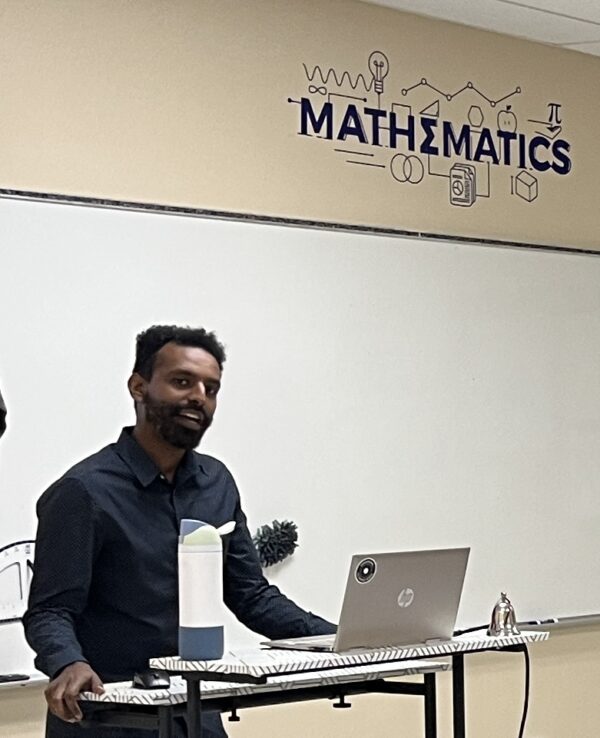
At Summit Christian Academy, we believe in making learning relevant and inspiring by connecting the classroom to real-world applications. Our Advanced Precalculus students recently had the privilege of welcoming Mr. Eyosias Samson, a Stanford-educated Electrical Engineer, into their classroom. His visit brought a fresh perspective to the topic of Extrema and Average Rates of Change in Functions, showing students how these mathematical concepts are essential in engineering and technology.
Mr. Samson shared how, as an Electrical Engineer, he frequently analyzes graphs of electrical voltage and current signals to troubleshoot and optimize circuits. He explained how understanding critical points, increasing and decreasing behaviors, and optimal values is crucial when debugging audio circuits. Through real-world examples, students saw firsthand how the math they’re learning isn’t just theoretical—it’s a key tool for solving complex engineering problems.
Beyond the technical insights, students were eager to learn about Mr. Samson’s path to Stanford University and his career in engineering. He shared how God used his Youth Leader to guide him toward pursuing Electrical Engineering and how faith played a central role in his academic and professional journey. Students also gained valuable advice on securing internships in college and the importance of seeking out mentors who encourage both professional and spiritual growth.
Mr. Samson’s visit sparked curiosity and enthusiasm among our students, reinforcing the idea that math is more than just numbers—it’s a tool that shapes technology, innovation, and careers. His story reminded them that God can use mentors, experiences, and hard work to lead them toward their calling.
At Summit Christian Academy, we are grateful for professionals like Mr. Samson who invest in our students by sharing knowledge, faith, and real-world experience. His visit left an impact, showing our future engineers, scientists, and problem-solvers that math isn’t just something to learn—it’s something to apply, explore, and use to glorify God